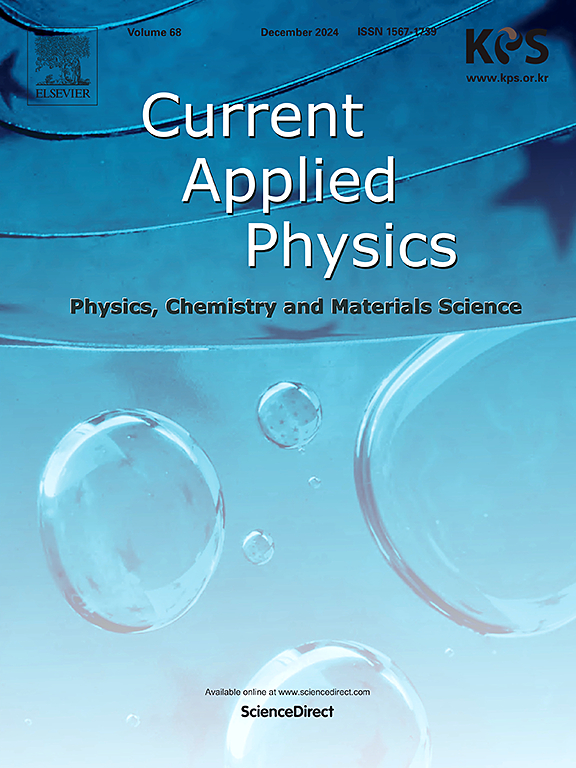再论LaMnO3:密度泛函理论研究
IF 3.1
4区 物理与天体物理
Q3 MATERIALS SCIENCE, MULTIDISCIPLINARY
引用次数: 0
摘要
密度泛函理论已广泛应用于各种现实材料,但往往不能准确地描述相关体系的性质。DFT + U方法引入了对DFT的Hubbard U校正,在过渡金属氧化物等系统的研究中发挥了重要作用。然而,DFT + U的方法细节及其对相关体系的电子结构和磁性能的具体影响仍不完全清楚。本研究以典型过渡金属氧化物LaMnO3为例,系统地评估了两种不同的DFT + U方法:自旋极化DFT + U (SDFT + U)和自旋非极化纯电荷DFT + U (CDFT + U)的性能。我们发现,虽然库仑U在两种方法中的作用相似,但亨德的JH起着根本不同的作用,特别是在确定正确的磁相方面。我们的研究表明,JH在交换分裂中起着积极的作用,在不同的方案下导致不同的磁基态。我们进一步研究了相关的磁交换相互作用,并将我们的结果与超越dft方法进行了比较。本文章由计算机程序翻译,如有差异,请以英文原文为准。

Revisiting LaMnO3: A density functional theory study
Density functional theory has been widely applied to a variety of realistic materials but often fails to accurately describe the properties of correlated systems. The DFT + U method, which introduces a Hubbard U correction to the DFT, has been instrumental in the study of systems such as transition metal oxides. However, the methodological details of DFT + U and its specific impact on the electronic structure and magnetic properties of correlated systems remain incompletely understood. In this study, using the prototypical transition metal oxide LaMnO3 as an example, we systematically assess the performance of two distinct DFT + U methods: spin-polarized DFT + U (SDFT + U) and spin-unpolarized charge-only DFT + U (CDFT + U). We found that, while the Coulomb U acts similarly in both approaches, the Hund's JH plays a fundamentally different role, particularly in determining the correct magnetic phases. Our investigation demonstrates the active role of JH in the exchange splitting, leading to distinct magnetic ground states based on the different schemes. We further investigate the associated magnetic exchange interactions and compare our results with beyond-DFT methods.
求助全文
通过发布文献求助,成功后即可免费获取论文全文。
去求助
来源期刊

Current Applied Physics
物理-材料科学:综合
CiteScore
4.80
自引率
0.00%
发文量
213
审稿时长
33 days
期刊介绍:
Current Applied Physics (Curr. Appl. Phys.) is a monthly published international journal covering all the fields of applied science investigating the physics of the advanced materials for future applications.
Other areas covered: Experimental and theoretical aspects of advanced materials and devices dealing with synthesis or structural chemistry, physical and electronic properties, photonics, engineering applications, and uniquely pertinent measurement or analytical techniques.
Current Applied Physics, published since 2001, covers physics, chemistry and materials science, including bio-materials, with their engineering aspects. It is a truly interdisciplinary journal opening a forum for scientists of all related fields, a unique point of the journal discriminating it from other worldwide and/or Pacific Rim applied physics journals.
Regular research papers, letters and review articles with contents meeting the scope of the journal will be considered for publication after peer review.
The Journal is owned by the Korean Physical Society.
 求助内容:
求助内容: 应助结果提醒方式:
应助结果提醒方式:


